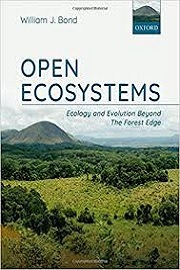Open Ecosystems: Ecology and evolution beyond the forest edge

William J Bond
Oxford University Press, £55.00
The non-forested open ecosystem is the focus of William Bond’s book, but not because such ecosystems comprise a greater percentage of available land. Rather, the fact that many non-forested land areas could be forested is the intriguing point. He asks why forests are not present when there is sufficient rain, the soils are suitable and temperature amenable. Shrubs, grasses and open woodland may thrive, but dense woodland is not present.
As far as Bond is concerned this situation goes against the assumption that climate determines the major vegetation type. The example given is the Cape Fynbos, the dominant vegetation type around Cape Town, South Africa. Chapter one explores this anomaly, concluding that the Fynbos has no extensive dense woodland because of the natural fire events that destroy larger trees, but stimulate growth of the unique ground flora. Subsequently, the Fynbos becomes dominant.
Over eight further chapters, the author covers the nature of open ecosystems, their origins, soils, herbivory and human interference in preventing and stopping natural fires. Discussing the nature of open ecosystems three global ‘traits’ of vegetation are explored: black, brown and green, referring to what consumes the vegetation. Black world traits are those in which fire is the consumer, brown refers to survivors of herbivory while green is for shade-tolerant plants.
Yet trees do survive through all this because of adaptations. Take for instance ‘underground trees’, or geoxylic suffrutices, that sprout after fire on the surface. These are the product of extensive buried branches from which stems develop to produce a shrub growth form rather than a full-blown tree.
Bond provides a fascinating account of a poorly considered area of ecology. He presents a sound argument to the consideration of non-forested areas being just as important as – and sometime more important than – the favoured dense forest as the epitome of ecological health. Packed with references, images, diagrams and colour plates, Open Ecosystems is a thorough, exhaustive textbook for the ecology and conservation professional.
Pat Sang MRSB


